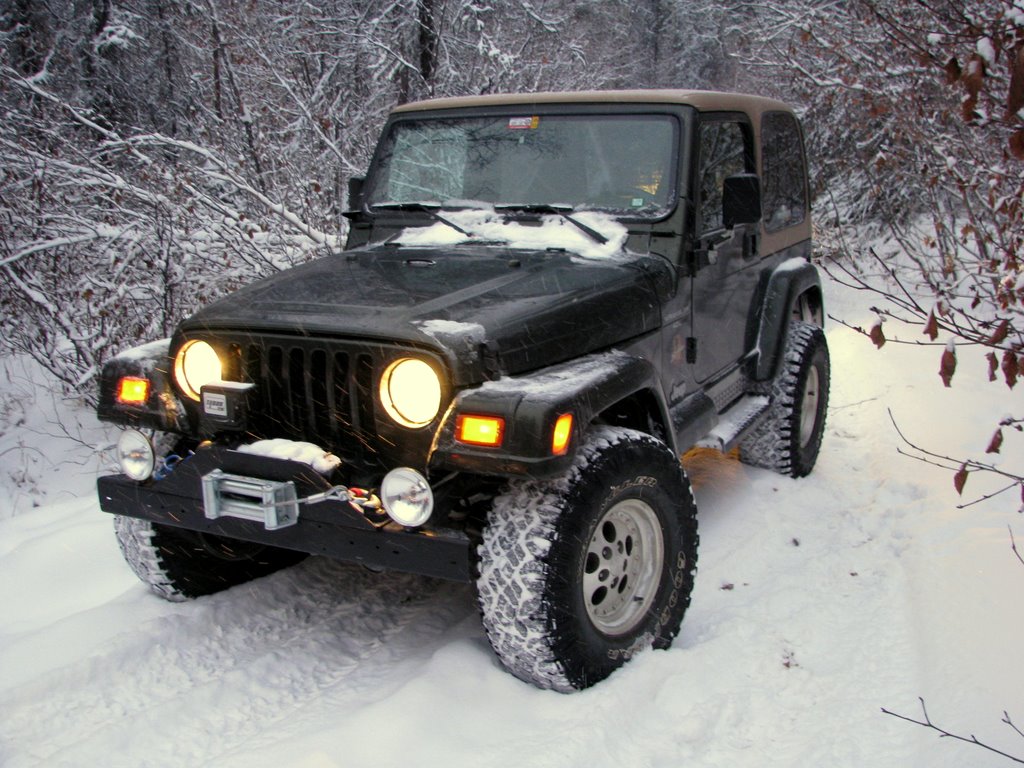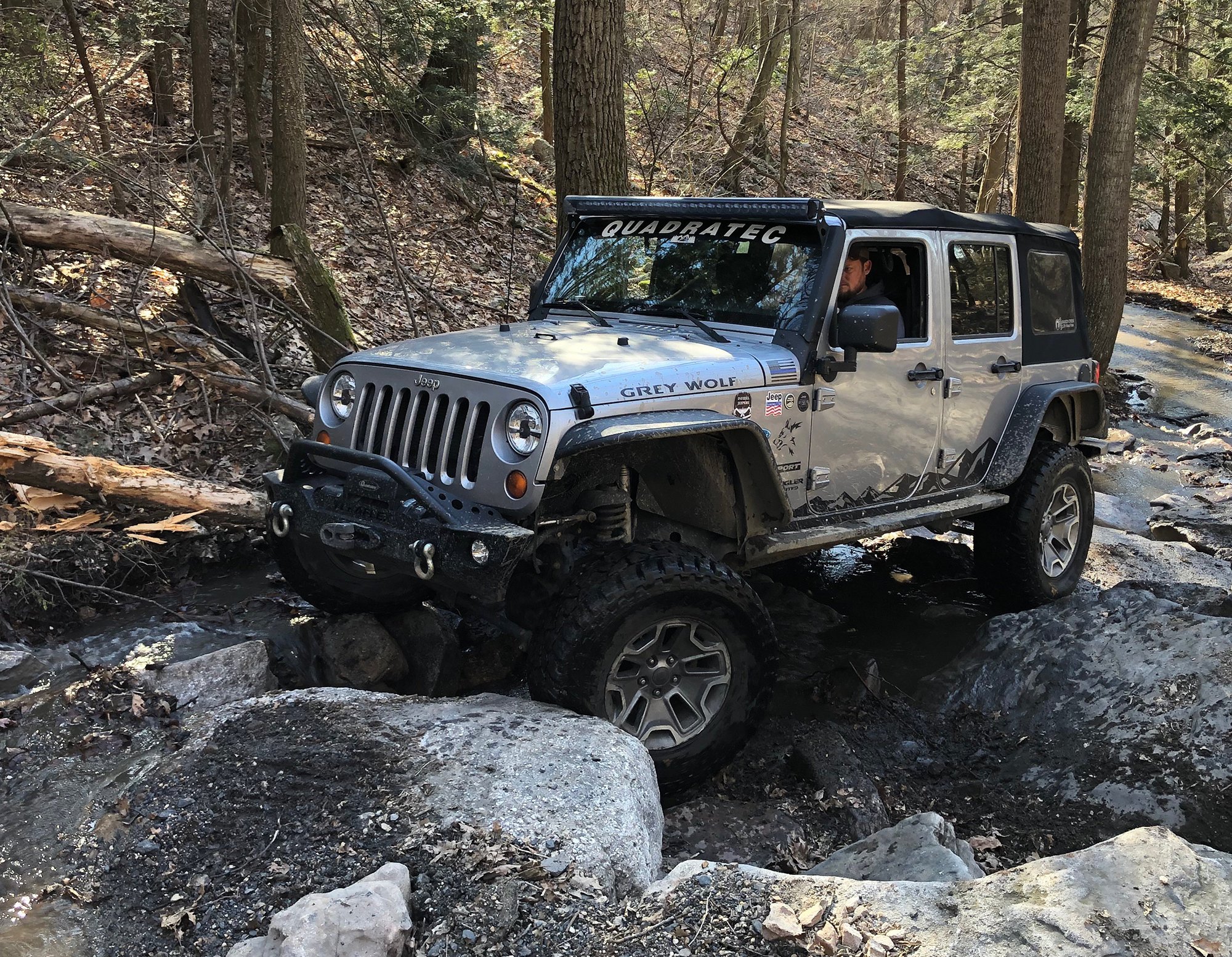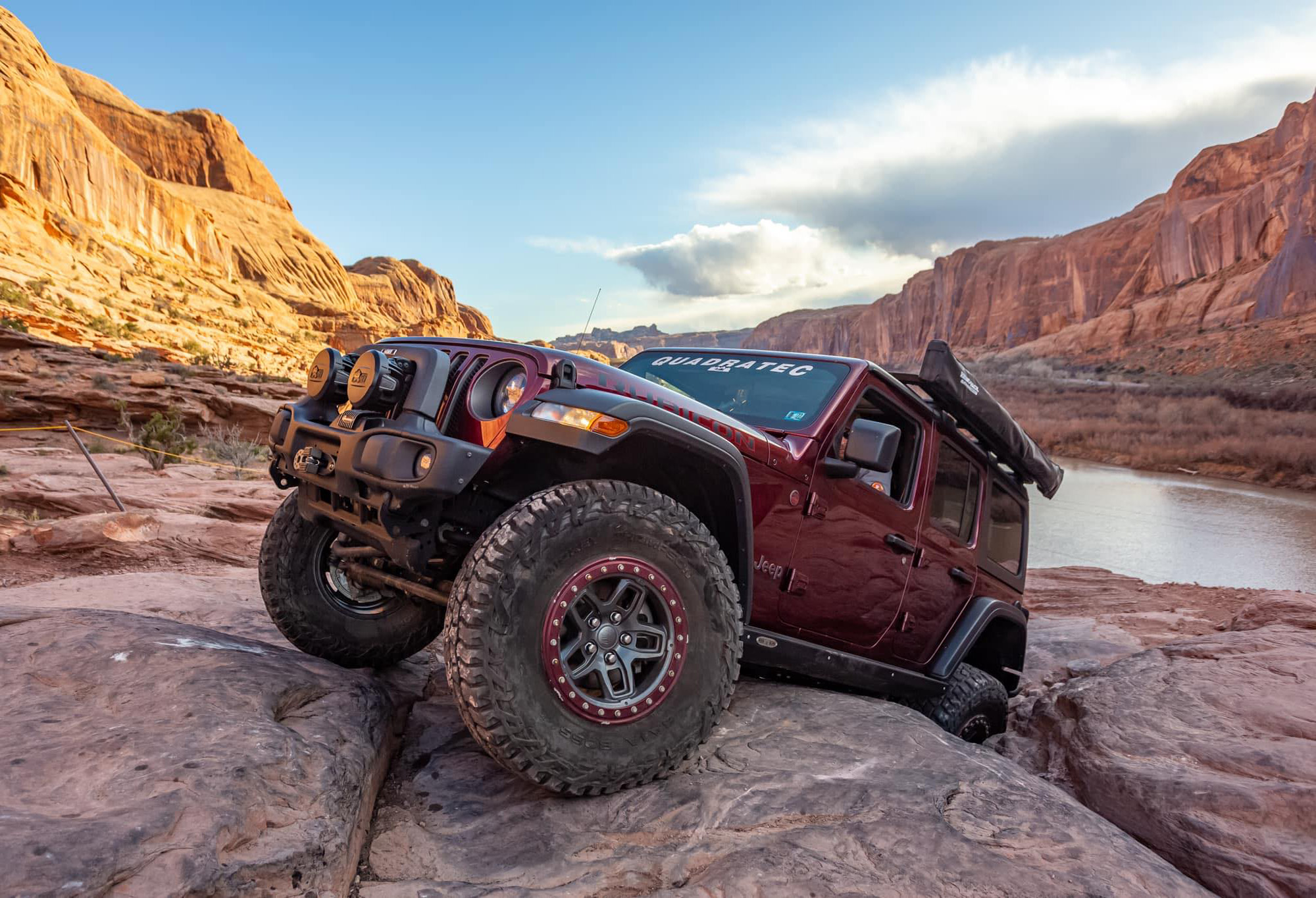by Kyle Buchter
Quadratec Trail Boss
Moab, Utah’s Steel Bender trail usually creates a fun experience for off-roaders of all levels.
Besides somewhat tricky rock ledge climbs and other bumps along the way, the trail holds two decent obstacles dubbed ‘The Wall’ and ‘Waterfall.’
You may remember we took the 2018 Fly and Drive Contest winner, Ed Tripp, there on his final day of off-roading.
Tripp took on Steel Bender that day in a Wrangler JL Unlimited, while others in the group had Wrangler TJs and two- or 4-door JKs.
And while everyone had a memorable time, not all vehicles performed the same on either of those obstacles.
That is because each generation of Wrangler comes with certain characteristics that impact off-road performance.
So here is the low down on differences between off-roading in a Wrangler TJ, JK and JL.

TJ
Off-roading with a TJ (1997-2006) certainly has its advantages. Vehicle turning is crisp and very responsive, allowing you to avoid close trees and maneuver easily through tight, narrow trails.
Its wheelbase, at 93.4 inches, is the smallest of all three editions and is really the major benefit. Being nimble is simply a huge advantage in most technical trail situations.
However, TJ automatic transmissions are either 3- or 4-speed, which results in a feeling that trail speed is too fast — even in 4L. So, you may find yourself tapping the brakes a bit more often than other vehicles you’ve taken off-roading.
Additionally, stock TJ axles are usually on the weaker end of the spectrum. Depending on the trim level, most models used a Dana 30 front and Dana 35 or Dana 44 rear. Jeep Rubicon editions, first offered in 2003, saw front and rear Dana 44 axles.
Rubicon owners aside, modifications to make the TJ more capable on off-road trails, like suspension lifts and larger tires, can prove a bit tricky as they put a lot more stress on those axles — sometimes leading to a full axle overhaul in order to safely accommodate those modifications.
Another difference when off-roading in a TJ Wrangler is the lack of traction control. This can be a downfall in twisted axle areas. Non-Rubicon vehicles did not come with lockers or sway bar disconnects, either, which can be crucial depending on trail difficulty. Despite this, one plus is a lack of technology means far fewer electrical things could go wrong.
Finally, while the Wrangler TJ was the first edition to utilize coil springs, the suspension was still pretty basic, resulting in a relatively rough ride compared to the JK and JL.

JK
These models, offered from 2007-early 2018, became wider and longer, changed engines, and introduced a 4-door version. This four-door was credited by then Head of Design Mark Allen as likely saving the Wrangler from extinction.
The automatic transmissions are a 4-speed (2007-11), which matched the later TJ years, but then swapped to a 5-speed (2012-18), allowing for a noticeable slower first gear in 4L. Most years had an available 6-speed manual. The additions of a downhill descent feature (2011-18) and traction control are welcome extras and can be used frequently to augment off-road performance.
The standard JK 2-door models did see a wheelbase jump to 95.4 inches, putting it two inches longer than the TJ. Still nimble, just slightly longer. Those driving a 4-door edition saw that wheelbase cascade to a full 116 inches — great for storage, great for stability, but not so much for trail maneuverability. So, these owners must pay particular attention to turns and technical portions of the trail as the vehicle’s turning radius is wider and steering not as responsive.
Regarding axle strength, most JK Wranglers utilize Dana 30 front and Dana 44 back axles. A small portion of 2007 JKs, less than a thousand, did come stock with a rear Dana 35. Rubicon versions feature Dana 44s on the front and back, which are also electronically lockable.
The width of these axles also increased about five inches over the TJ counterparts. This increased width gives the axles more strength and the ability to better handle suspension and tire upgrades, as well as added weight from aftermarket bumpers and winches.
With more electronics in JK models, water intrusion is more of an issue, and modifications are more complex, but less lift is needed to fit larger tires. Additionally, traction control and other updated electronic features greatly improve off-road mobility.

JL
Jeep’s latest Wrangler, the JL, was introduced early in 2018, and is a little wider at 96.8 inches and longer (166.8 in Unlimited) than its TJ or JK brothers. This means additional stability, but also a slightly wider turning arc around many of those trail obstacles.
Designers also added stronger axles, with most models coming with what Dana calls ‘Next Generation’ M186 front and M200 rear versions. These are beefier than previous Dana 30 and 35 stylings and are about an inch wider than JK counterparts. Rubicon editions have M210 and M220 axles that are significant upgrades from older Dana 44 versions. Plus, these clock in at 68 inches wide — 2.5 inches over JK axles.
The JL’s standard transmission remained as a 6-speed manual, but the automatic swapped to an eight-speed automatic, both performing admirably off-road. First gear provides a nice and slow crawling ability — even in the Sport model. The JL also kept the downhill descent and traction control features, but a dash icon does not appear when traction control is used.
The traction control is also a lot more responsive in the JL edition and performs to the point of barely being noticeable. The auto park feature does act up and will lock in the park when it doesn’t like what is happening.
Another nice feature is the dash icon now shows when you are in 2H, 4H or 4L. Prior models’ icon only shows that you moved out of 2H but did not distinguish between 4H and 4L.
These newer features do make for a more comfortable ride and JL models do not require a lot of modifications to improve off road capabilities. In fact, because of the slightly extra clearance and additional strength, enthusiasts can comfortably put 35-inch tires on the Jeep without any extra vehicle lift. Some have even placed 37-inch tires on a stock JL, however a suspension lift for this size is highly recommended to eliminate tire rub and reduced turning radius.
All of these extra electronics and drivetrain improvements also need some additional care and are not totally safe from abusive driving and water/mud intrusion.
So, like everything else, use intelligent judgment when off-roading and handle obstacles with appropriate care.
Regarding the past three generations of Jeep models, it falls into a personal preference when off-roading. Some enjoy the electronics and creature comforts, while others appreciate more driver response and less potential for electrical gremlins. All are capable and work best with good driving skills and appropriate modifications to complement a driver’s abilities and needs.





















